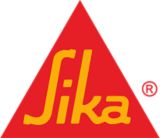Innovation in Sustainable Solutions is an integral part of Sika’s innovation strategy. Creating value-added products based on both optimized performance and sustainability benefits is the key objective of the Sustainability Portfolio Management (SPM) approach.
Sika’s SPM methodology is based on the World Business Council for Sustainable Development (WBCSD) Chemical Industry Methodology for Portfolio Sustainability Assessments (PSA). Sika uses the SPM methodology to evaluate, classify, and market products in terms of performance and sustainability. By evaluating products using a set of criteria within market segments, Sika can promote new or existing products under the “More Performance – More Sustainable” branding.
The performance and sustainability categories represented within the SPM methodology are directly aligned to the sustainability topics material to Sika (Sika Materiality Analysis) and support the company’s contribution to the UN Sustainable Development Goals (UN SDGs). The SPM methodology is an integral part of the Product Creation Process (PCP).
A standardized approach allows an efficient product development evaluation and ensures accurate information for making decisions and benchmarking purposes. The SPM methodology applies to all product categories, including new product developments as well as existing products, and follows a four-step approach. This allows Sika to evaluate products on their performance and sustainability profiles and their contribution to the strategic target. Products that account for a larger volume of sales or with a higher sustainability relevance are prioritized.
1. SEGMENTATION
Products are evaluated and classified in specific segments. This segmentation determines the context of its unique technology and application combination.
2. SUSTAINABILITY
Evaluation of the product against the range of criteria covered under 12 different sustainability categories (SPM sustainability profile).
3. PERFORMANCE
Evaluation of the product against the range of criteria covered under 6 different performance categories (SPM performance profile).
4. CLASSIFICATION
The final step combines the results of steps 2 and 3 into the final product classification (SPM profile).
The Sustainability categories that form part of the Sika Sustainability Portfolio (SPM) methodology are comprehensive and cover the sustainability topics material to Sika. Products assessed under the SPM methodology undergo a rigorous evaluation against 12 Sustainability Categories, ensuring that Sika Sustainable Solutions are fit for purpose.
Supplier sustainability
Sharing values for more success
Regulatory trends
Aligning product developments with regulatory trends and stakeholder expectations
Energy
Products that promote energy efficiency principles
Chemical hazard & exposure
Assessing and eliminating chemical hazards and exposure
Health & safety
Products that are healthy, safe and easy to use
Packaging
Prioritizing the use of responsible packaging for products
Reputational risks
Addressing current and future reputional & business risks
Air quality & emissions
Products that promote good air quality and minimise emissions
Climate
Products that minimise the impact on the climate
Green Building Standards
Products that contribute to world-renowned Green Building Standards
Cost savings downstream
Helping customers to directly, measurably and significantly reduce costs during application/use
Resources & circularity
Efficient use of precious resources
The Performance categories that form part of the Sika Sustainability Portfolio (SPM) methodology are comprehensive and cover technology specific topics material to Sika. Products assessed under the SPM methodology undergo a rigorous evaluation against 6 Performance categories, ensuring that our Sustainable Solutions are fit for purpose.
Technical performance
Achievement of selected technical objectives
Additional features
Product-technology-specific requirements
Aesthetics
Well designed, pleasing appearance and effect
Ease of application
The product's convenience and ease of use
Cost benefits
Cost-effective solutions
Durability
Solutions that prove test of time

